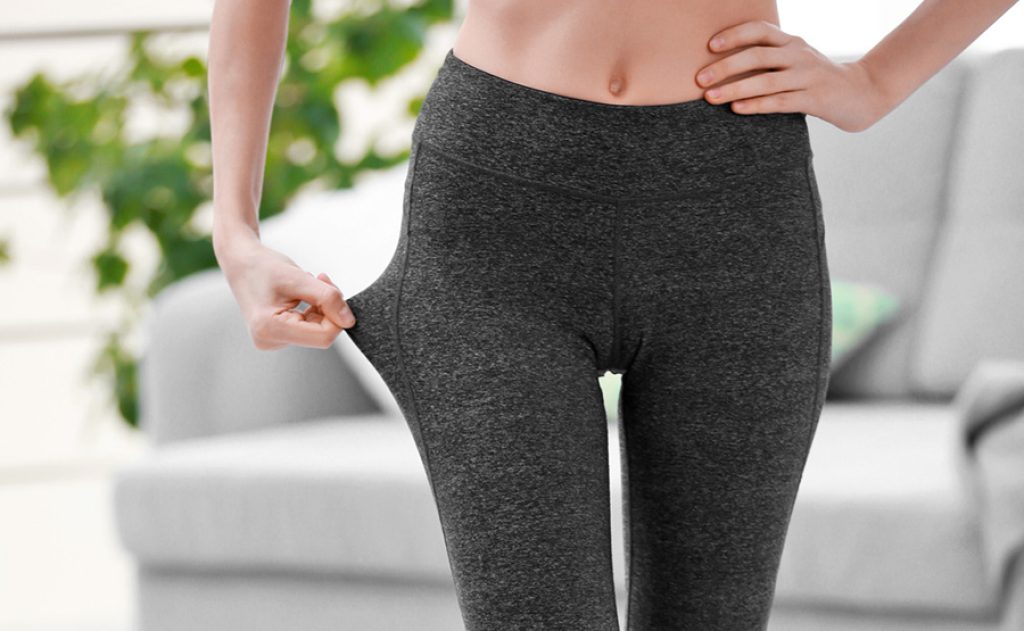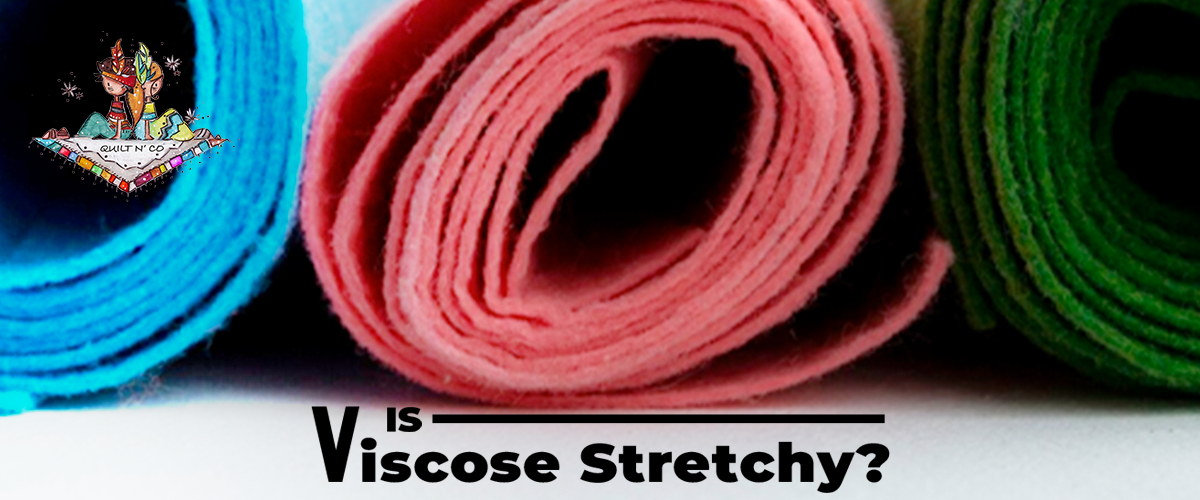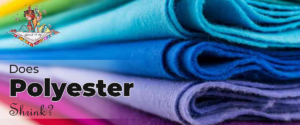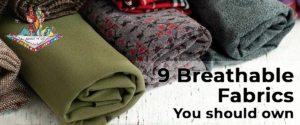Viscose is a tricky fabric because it’s generally not a stretchy fabric. The stretchiness of viscose will depend on several different factors of the fabric, so it’s important to make sure that your viscose has stretchy features before you try to stretch it.
Trying to stretch viscose if it’s not stretchy can damage it or ruin it forever. 100% viscose will only stretch around 2%. In comparison, other fabrics such as spandex can stretch between 200% and 400% its original size.
There are things you can do to improve how stretchy your viscose is.
What Is Viscose?
Viscose is often confused with rayon. While they are produced using a similar process, they are not the same fabric.
Viscose is a semi-synthetic material that uses wood-pulp to make a silk substitute. This is a type of rayon that uses wood pulp and not general cellulose.
How Much Does Viscose Stretch?
Viscose is a synthetic material that does not stretch much naturally. Generally, 100% viscose will only stretch between 2% and 3%. This is not always the case.
Viscose that is woven tightly will shrink less than viscose fabric that is more loosely woven. Woven fabrics are less stretchy than knitted fabrics. Depending on your needs, it’s important that you choose your style of fabric carefully. If you want to increase the stretchiness of viscose, you need to buy viscose blended with a stretchy fabric.
Some common viscose blends that are stretchier than 100% viscose include
If you want to use viscose but are looking for a more stretchy option, then I recommend a fabric that is less than 50% viscose.
If you want to keep most of the properties of viscose, then I recommend using a fabric that is more than 60% viscose.
Can You Stretch A Viscose Fabric When Wet?
Yes, stretching viscous when wet is the best way to stretch viscous. You can do this by hanging it and letting the weight from the water and gravity stretch it naturally.
You can also gently pull each side you want to stretch and place a heated object at each corner to keep your fabric in place.
It’s important that you shouldn’t wring or twist viscose when it’s wet. This can damage the fabric and won’t result in much stretching. Be cautious when trying to stretch viscous when wet. If you try to push the material too far, it can be permanently damaged.
Does Viscose Stretch When Worn?
Yes, Viscose might experience minor stretching when worn. This is mainly due to the heat generated from your body. Since viscose, in general, is not stretchy, the amount experienced when wearing is minor and unnoticeable.
Is Viscose More Stretchy Than Polyester?
No, viscose is not more stretchy than polyester. Viscose can only stretch around 2%, while polyester can stretch up to 15%. If you are trying to decide on a fabric based on its ability to stretch, polyester is the best option.
Polyester is a great fabric you can blend with viscose to increase the stretchiness. It allows you to keep all the benefits and main features of viscose while making it more stretchy.
Is Viscose More Stretchy With Nylon?
Yes, viscose is more stretchy when blended with nylon. When blending viscose with stretchy fabric, it will become more stretchy. The higher the blend of nylon, the more stretchy viscose will become.
Is Viscose And Elastane Stretchy?
Yes, when blended, viscose and elastane are stretchy. Elastane is a great material that will enhance the stretchiness of any material. When blending viscose with elastane, viscose becomes stretchy, easier to wash, and has a soft and smooth finish.

Is Polyester And Viscose Stretchy?
Yes, when polyester and viscose are blended, the viscose will become more stretchy than 100% polyester. Polyester is almost 10 times more stretchy than viscose. When blended, this will enhance the stretchiness of viscose.
Even combining viscose with 5% polyester, the viscose will become substantially more stretchy than 100% viscose. The more you increase the polyester in the blend, the more stretches the blend will become.
Is Cotton Viscose Stretchy?
Cotton and viscose blended together are not very stretchy. Both of these fabrics are relatively non-stretchy, which does not increase the stretchiness by much.
Cotton is more stretchy than viscous. This means that when you blend them together there will be some improvement to the stretchiness.
Is Woven Viscose Stretchy?
Viscose fabric is more stretchy when it’s knitted compared to a woven fabric. If you are looking to enhance the stretchiness of your viscose, choose a blend that is knitted.
Woven fabrics create tight bonds that are difficult to stretch. Since the fabric is held together by knots or anchors, trying to stretch the fabric can result in permanent damage.
Knitted viscose allowed you to stretch the fabric much easier due to the weaker bonds. This will allow you to stretch individual parts of the fabric without affecting the other areas.
Is Bamboo Viscose Stretchy
Yes, a bamboo viscose blend is more stretchy than 100% viscose. Bamboo is more stretchy than viscose. Although, it’s not as stretchy as other fabrics. This blend will enhance the softness and stretchiness of viscose.
Step by Step Guide



Viscose Vs. Polyester
These two materials are common for making garments, but there’s a lot of variance between them. First, Viscose beats Polyester when it comes to absorbency because Polyester is oil-based and Viscose, as I shared, is plant-based.
Second, Polyester tends to be more durable than Viscose, even when blended with other textiles. Both fabrics aren’t stretchy. That’s why it’s ideal to purchase blended versions of both instead of the pure one.
Viscose Vs. Modal Fabric
Modal is another promising type of Rayon fabric. Like Viscose, Modal undergoes the same production process but uses an eco-friendly solution, contrary to the harsh chemicals applied during Viscose production.
Modal is highly water-resistant, and because the production process of Modal takes longer than Viscose, the fibers are much more durable and less likely to shrink.
Quick Guide
Any work done by hand can be a little extra but worth it. Same as caring for Viscose, it’s the ideal way to prevent further shrinking the fabric. If you don’t have the luxury of time and need to machine wash, remember to turn the fabric inside out before spinning in a gentle wash.
Be mindful of washing and rinsing only with clean cold water and nothing above that temperature if you don’t want your money to waste. Give a little shake after you wash the items to avoid wrinkles
Store your Viscose in cotton bags, never in plastic containers because plastics may trap moisture, which will damage the clothing.
When you have an annoying stain to remove, apply mild soap on the area and squish gently. Don’t scrub the fabric.
Conclusion
Understand the fabric you’re purchasing and how you can take care of it longer. Stretching a Viscose fabric is possible with a little patience. It may seem like the efforts you’re making only results in minimal and gradual effects, but believe me that you have to keep trying; it is achievable.
Just try out the steps in this article, and you’ve got nothing to lose. You might be surprised with the outcome, later on, don’t give up just yet!














